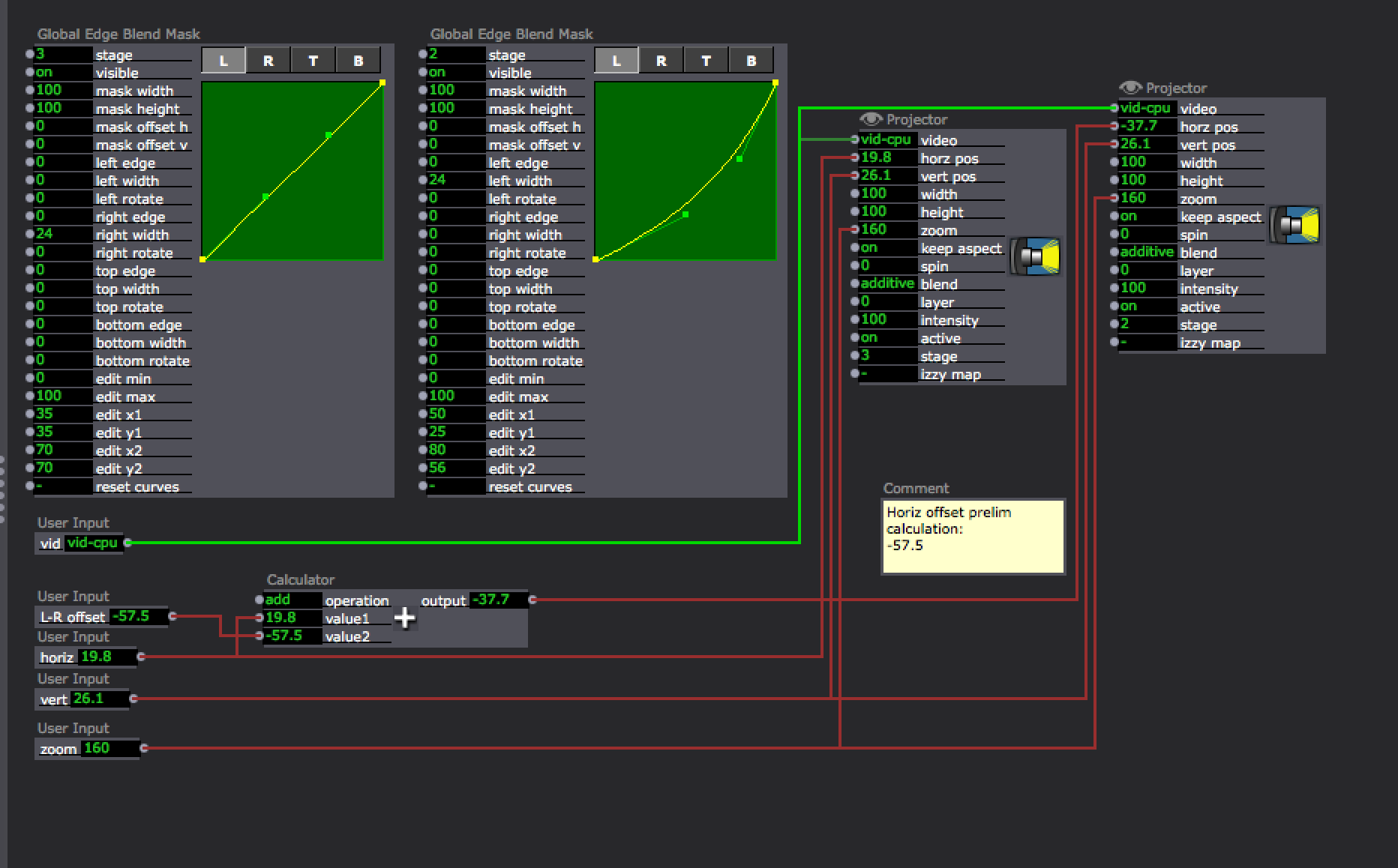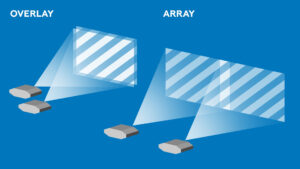

The blend zone will need to consume pixels that would have otherwise been used for content. Two 1920 x 1080 images placed edge to edge will have a span of 3840 pixels, but if pixels need to be doubled in the overlapping blend zone, those extra pixels used for blending don't appear from thin air. It seems natural at first to think that a 1 x 2 array of 1920 x 1080 projectors would need content created at 3840 x 1080, but that assumption can lead undesirable consequences.Ī projector has a set amount of physical pixels just like a monitor.

#EDGE BLENDING PROJECTORS FULL#
It's important to take this fact into consideration in regards to the full production pipeline and workflow. Filling in some numbers, that means that the 256 pixels on the right edge of Projector A must be the same as the 256 pixels on the left edge of Projector B, as per the diagram below: In this example, that means that the right edge of Projector A and the left edge of Projector B must have the exact same content. For the image to overlap, that means the both projectors must have the same content on their blending edges. This overlapping section can cause problems if all of its implications aren't considered. For this example, 10\% of the length of a 1920 x 1080 screen is 192 pixels, and the nearest power of 2 is 256. Starting with a blend zone that is a power of 2 close to 10\% of your single projector size can be a good place to start experimenting. The amount of overlap needed will vary based on many factors such as projector resolution and installation parameters. The act of blending both of these projectors will require an overlapping section. Below is a diagram of a 1 x 2 array of projectors:

In this example, the goal will be to blend two 1920 x 1080 projectors in a 1 x 2 array (1 unit tall and 2 units across). The best way to learn the basics of edge blending is through an example setup. For further reference and reading, please find that paper at the link below:Įdge blending using commodity projectors by Paul Bourke

There is an excellent paper written by Paul Bourke that goes much more in-depth on the subject of edge blending than we will be going here. These principles of physics and additive color mixing are the basis for edge blending. Separately, these projectors output their assigned colors, but if you aim the projectors so that the colors overlap, the areas where these two projectors overlap you will actually have a turquoise color. Set up 2 projectors and have one project the color blue and have the other project the color green. A great example of the principles behind edge blending can be done relatively quickly. The idea of edge blending might be new to those who generally work with monitors and screen arrays. This act of blending the overlapping sections is called 'Edge blending'. This is done by creating arrays of projectors with overlapping edges that are blended together to create a seamless canvas. Video projectors are an incredibly flexible and are able to create infinitely large canvases. Outputting Content for Deployment and Performance


 0 kommentar(er)
0 kommentar(er)
